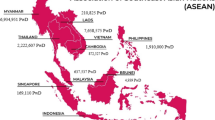Abstract
The ratio of the population with disabilities in Turkey was approximately 12 percent as of 2002, and only a very little portion of them were found to have reached the higher education level. Furthermore, contribution of people with disabilities to employment is also important for their wellness and experiencing civil liberties. Barrier-free IT is among the most important tools in this respect. There is a legislation in Turkey for the practices in this field, and the special circumstances and technological services-related studies for accessibility are considered within the framework of a universal service. The shift towards an information society should offer an environment which involves all individuals of the society. Inter-institutional cooperation and more effective use of the resources are required to overcome the barriers. Furthermore, keeping a national database is also important for correct distribution and ensuring effectiveness of the resources. The problem of accessibility and availability in information technologies and services is waiting for a solution. Information technologies play a critical and distinctive role to solve these problems and create employment for people with impairment. This is a descriptive study on the developments and assessments regarding Barrier-Free IT in Turkey.
Similar content being viewed by others
References
Bolte, S., Golan, O., Goodwin, M.: What can innovative technologies do for autism spectrum disorders? Autism 14, 155–159 (2010)
Cosco, F., Garre, C., Bruno, F., Muzzupappa, M., Otaduy, M.: Visuo-haptic mixed reality with unobstructed tool-hand integration. IEEE Trans. Visual. Comput. Gr. 19, 159–172 (2013)
Doucet, M., Guillemot, J., Lassonde, M., Gagné, J., Leclerc, C., Lepore, F.: Blind subjects process auditory spectral cues more efficiently than sighted individuals. Exp. Brain Res. 160, 194–202 (2005)
Gentry, T., Wallace, J., Kvarfordt, C.: Personal digital assistants as cognitive aids to high school students with autism: results of a community-based trial. J. Vocat. Rehabil. 32, 101–107 (2010)
Gillespie-Lynch, K., Kapp, S.K., Shane-Simpson, C.: Intersections between the autism spectrum and the internet: perceived benefits and preferred functions of computer-mediated communication. Intellect. Dev. Disabil. 52(6), 456–469 (2014)
Hedges, S.H., Odom, S.L., Hume, M., Sam, A.: Technology Use as a Support Tool by Secondary Students with Autism. Sage Publications, Thousand Oaks (2017)
Lazar, J., Wentz, B.: Ensuring accessibility for people with disabilities. In: Buie, E., Murray, D. (eds.) Usability in Government Systems. Elsevier, Amsterdam (2012)
TÜİK: Survey on people with disabilities in Turkey https://kutuphane.tuik.gov.tr/pdf/0014899.pdf (2002). Accessed 10 Dec 2017
Author information
Authors and Affiliations
Corresponding author
Rights and permissions
About this article
Cite this article
Kalaç, M.Ö., Telli Yamamoto, G. Developments and assessments on barrier-free it in Turkey. Qual Quant 52 (Suppl 2), 1245–1252 (2018). https://doi.org/10.1007/s11135-018-0694-9
Published:
Issue Date:
DOI: https://doi.org/10.1007/s11135-018-0694-9




